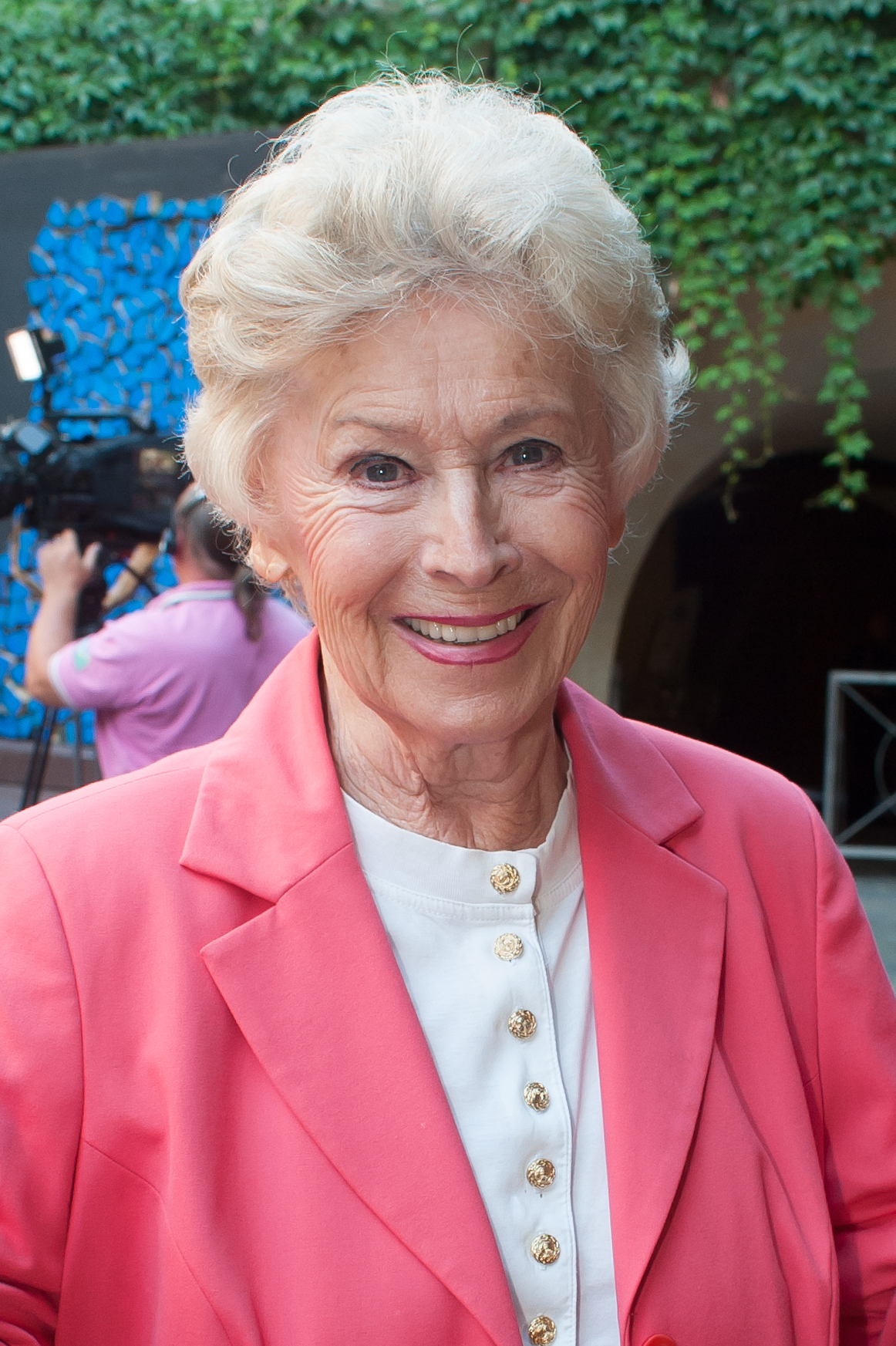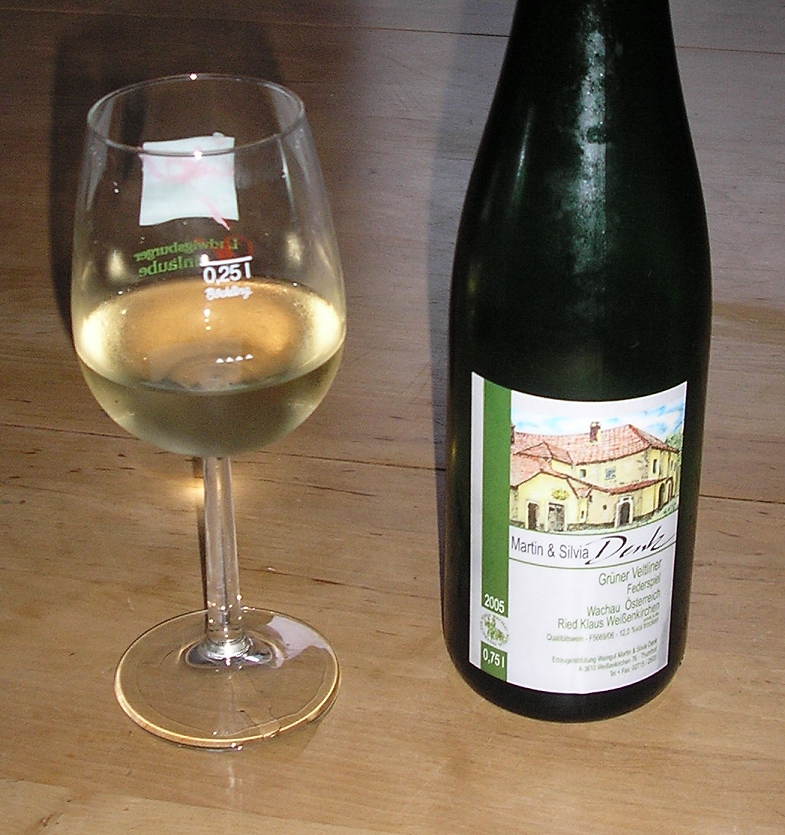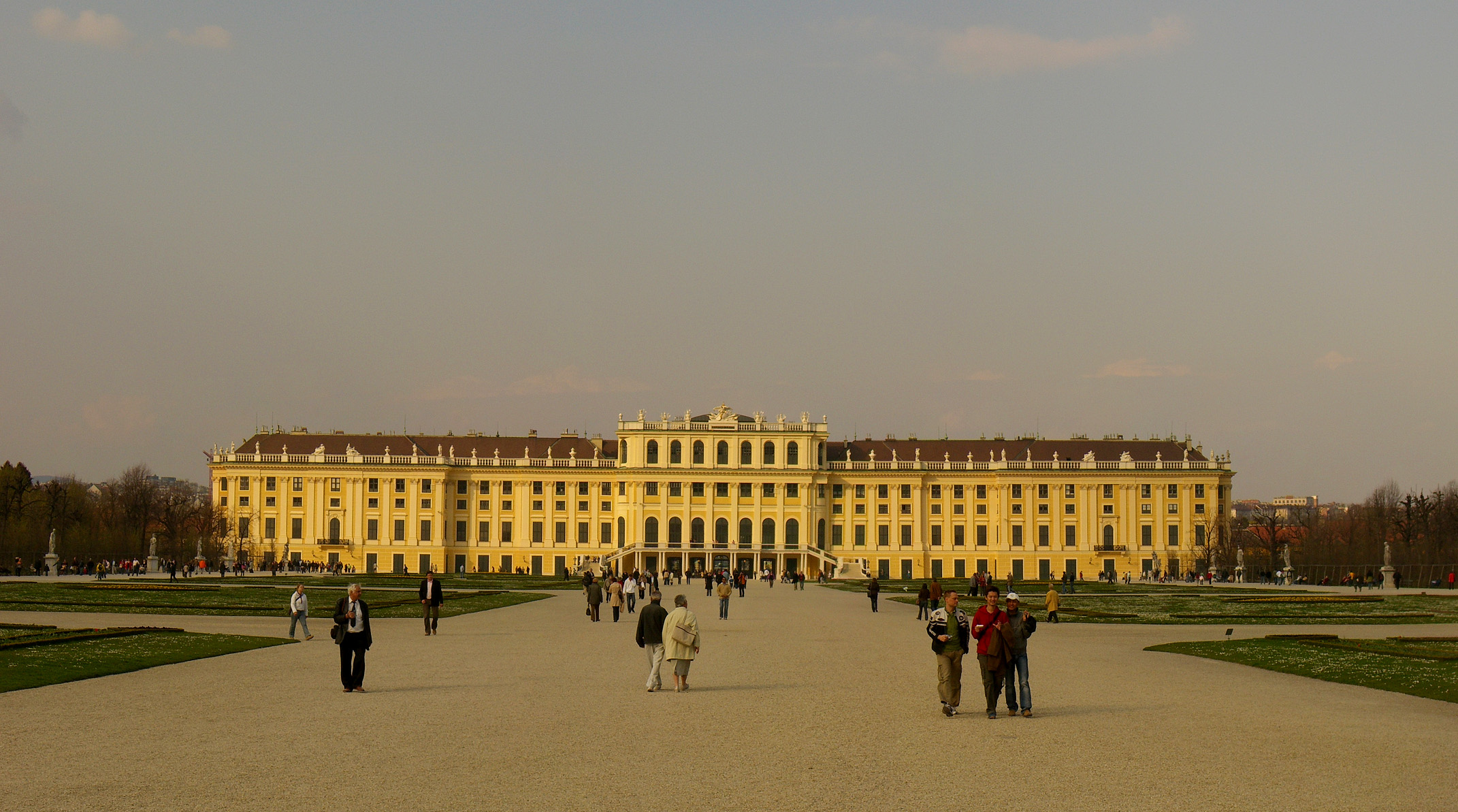|
1. April 2000
''1. April 2000'' is a 1952 political satire film directed by Wolfgang Liebeneiner and starring Hilde Krahl, made during the Allied Occupation of Austria (1945–55). The script was reportedly commissioned at the request of the Austrian government, and is a political satire depicting a harmless, potentially congenial future Austria still subject to needless and stifling oversight by the four Allied powers, as established following the defeat of Nazi Germany in World War II (as it was when the film was made). The film was entered into the 1953 Cannes Film Festival. Plot summary After numerous fruitless negotiations with the Allies about the independence of Austria, the Austrian prime minister prompts his fellow countrymen to shred their four-language identity cards, which have been issued by the Allies, thus sending a clear signal to the world. Thereupon, Austria is charged for breaking the "world peace" at the fictitious "world court". The implicated message is clear: in the sa ... [...More Info...] [...Related Items...] OR: [Wikipedia] [Google] [Baidu] |
Wolfgang Liebeneiner
Wolfgang Georg Louis Liebeneiner (6 October 1905 – 28 November 1987) was a German actor, film director and theatre director. Beginnings He was born in Liebau in Prussian Silesia. In 1928, he was taught by Otto Falckenberg, the director of the Munich Kammerspiele, in acting and directing. Nazi era In 1936, Liebeneiner became a member of the Prussian State Theater () in Berlin and in 1938, he became artistic director of the German Film Academy Babelsberg (). In 1941, he directed the film ''Ich klage an'' (''I accuse'') in cooperation with the Ministry of Public Enlightenment and Propaganda. The film was about voluntary euthanasia of a woman suffering from multiple sclerosis, but was intended to support the T4 euthanasia program. He received a doctorate in the years from 1942 to 1945 while working for Universum Film AG, the largest German film studio at that time. Post war In 1947, Liebeneiner directed the debut of Wolfgang Borchert's play ' (''The Man Outside'') in the Hambur ... [...More Info...] [...Related Items...] OR: [Wikipedia] [Google] [Baidu] |
Negotiation
Negotiation is a dialogue between two or more people or parties to reach the desired outcome regarding one or more issues of conflict. It is an interaction between entities who aspire to agree on matters of mutual interest. The agreement can be beneficial for all or some of the parties involved. The negotiators should establish their own needs and wants while also seeking to understand the wants and needs of others involved to increase their chances of closing deals, avoiding conflicts, forming relationships with other parties, or maximizing mutual gains. The goal of negotiation is to resolve points of difference, gain an advantage for an individual or collective, or craft outcomes to satisfy various interests. Distributive negotiations, or compromises, are conducted by putting forward a position and making concessions to achieve an agreement. The degree to which the negotiating parties trust each other to implement the negotiated solution is a major factor in determining ... [...More Info...] [...Related Items...] OR: [Wikipedia] [Google] [Baidu] |
Judith Holzmeister
Judith Maria Holzmeister (14 February 1920 – 23 June 2008) was an Austrian actress. Her performances included ''Kunigunde'' opposite Ewald Balser in Franz Grillparzer's '' König Ottokars Glück und Ende'' at the reopening of the famed Vienna Burgtheater in 1955. Judith Holzmeister was born in Innsbruck, Austria, on 14 February 1920, the daughter of Clemens Holzmeister. She began her career in acting with her debut at the Provincial Theater in Linz, Austria. Holzmeister began working at the Burgtheater in 1947, and remained at that particular theater until her retirement. Holzmeister worked at the Vienna Volkstheater during World War II. She was involved with anti-Nazi resistance groups during the war and helped to hide Jews from Nazi German authorities. Holzmeister also enjoyed an acting career within television and film. She was a recipient of the Kainz Medal, an award for prominent actors which was handed out annually between 1958 and 1999. She was married to the acto ... [...More Info...] [...Related Items...] OR: [Wikipedia] [Google] [Baidu] |
Waltraut Haas
Waltraut Haas (born 9 June 1927) is an Austrian actress and singer. Born in Vienna, Haas grew up at Schloss Schönbrunn, where her mother was a restaurateur. Haas made her stage debut in Linz but was soon won over to the big screen. She achieved fame and recognition already through her first movie, the cult classic ''Der Hofrat Geiger'' (1947), in which she played Mariandl, the illegitimate daughter of a woman who runs an inn in the picturesque Wachau valley. In 1961, Haas would play Mariandl's single mother in a remake entitled ''Mariandl''. Her other famous movie role was that of Josepha Vogelhuber in the 1960 film ''The White Horse Inn'' (''Im weißen Rößl'') opposite Peter Alexander. After 60 movies, mainly comedies and musicals, she stopped making films around 1970. Since then, she has also appeared on television. From 1966 until his death in 2011, Waltraut Haas was married to actor Erwin Strahl, with whom she frequently performed both on the stage and in films. Their son ... [...More Info...] [...Related Items...] OR: [Wikipedia] [Google] [Baidu] |
Moscow Declaration Of 1943
The Moscow Declarations were four declarations signed during the Moscow Conference on October 30, 1943. The declarations are distinct from the Communique that was issued following the Moscow Conference of 1945. They were signed by the foreign secretaries of the governments of the United States, the United Kingdom, the Soviet Union and the Republic of China. Four declarations were signed at the conference: The Declaration of the Four Nations on General Security, the Declaration on Italy, the Declaration on Austria, and the Declarations on Atrocities. Declarations Declaration of the Four Nations on General Security In the section ''Joint Four-Nation Declaration'', the governments of the United States of America, United Kingdom, the Soviet Union, and Nationalist China, in accordance with the declaration by United Nations of January 1942, and subsequent declarations, to continue hostilities against those Axis powers with which they respectively are at war until such powers have lai ... [...More Info...] [...Related Items...] OR: [Wikipedia] [Google] [Baidu] |
Viennese Waltz
Viennese waltz (german: Wiener Walzer) is a genre of ballroom dance. At least four different meanings are recognized. In the historically first sense, the name may refer to several versions of the waltz, including the earliest waltzes done in ballroom dancing, danced to the music of Viennese waltz. What is now called the Viennese waltz is the original form of the waltz. It was the first ballroom dance performed in the closed hold or "waltz" position. The dance that is popularly known as the waltz is actually the English or slow waltz, danced at approximately 90 beats per minute with 3 beats to the bar (the international standard of 30 measures per minute), while the Viennese waltz is danced at about 180 beats (58-60 measures) per minute. To this day however, in Germany, Austria, Scandinavia, and France, the words (German), (Danish, Norwegian, and Swedish), and (French) still implicitly refer to the original dance and not the slow waltz. The Viennese waltz is a rotary dan ... [...More Info...] [...Related Items...] OR: [Wikipedia] [Google] [Baidu] |
Austrian Wine
Austrian wines are mostly dry white wines (often made from the Grüner Veltliner grape), though some sweeter white wines (such as dessert wines made around the Neusiedler See) are also produced. About 30% of the wines are red, made from Blaufränkisch (also known as Lemberger, or as Kékfrankos in neighbouring Hungary), Pinot noir and locally bred varieties such as Zweigelt. Four thousand years of winemaking history counted for little after the " antifreeze scandal" of 1985, when it was revealed that some wine brokers had been adulterating their wines with diethylene glycol. The scandal destroyed the market for Austrian wine and compelled Austria to tackle low standards of bulk wine production, and reposition itself as a producer of quality wines. The country is also home to Riedel, makers of some of the most expensive wine glasses in the world. Some of the best producers of Austria include Weingut Bründlmayer, Weingut F.X. Pichler and Weingut Franz Hirtzberger, Weingu ... [...More Info...] [...Related Items...] OR: [Wikipedia] [Google] [Baidu] |
Empress Maria Theresa
Maria Theresa Walburga Amalia Christina (german: Maria Theresia; 13 May 1717 – 29 November 1780) was ruler of the Habsburg dominions from 1740 until her death in 1780, and the only woman to hold the position ''suo jure'' (in her own right). She was the sovereign of Austria, Hungary, Croatia, Bohemia, Transylvania, Mantua, Milan, Lodomeria and Galicia, the Austrian Netherlands, and Parma. By marriage, she was Duchess of Lorraine, Grand Duchess of Tuscany and Holy Roman Empress. Maria Theresa started her 40-year reign when her father, Emperor Charles VI, died on 20 October 1740. Charles VI paved the way for her accession with the Pragmatic Sanction of 1713 and spent his entire reign securing it. He neglected the advice of Prince Eugene of Savoy, who believed that a strong military and a rich treasury were more important than mere signatures. Eventually, Charles VI left behind a weakened and impoverished state, particularly due to the War of the Polish Succession and the Rus ... [...More Info...] [...Related Items...] OR: [Wikipedia] [Google] [Baidu] |
Prince Eugene Of Savoy
Prince Eugene Francis of Savoy–Carignano, (18 October 1663 – 21 April 1736) better known as Prince Eugene, was a Generalfeldmarschall, field marshal in the army of the Holy Roman Empire and of the Austrian Habsburg dynasty during the 17th and 18th centuries. He was one of the most successful military commanders of his time, and rose to the highest offices of state at the Imperial court in Vienna. Born in Paris, Eugene was brought up in the court of King Louis XIV of France. Based on the custom that the youngest sons of noble families were destined for the priesthood, the Prince was initially prepared for a clergy, clerical career, but by the age of 19, he had determined on a military career. Based on his poor physique and bearing, and maybe due to a Affair of the Poisons, scandal involving his mother Olympe, he was rejected by Louis XIV for service in the French army. Eugene moved to Austria and transferred his loyalty to the Holy Roman Empire. In a career spanning six deca ... [...More Info...] [...Related Items...] OR: [Wikipedia] [Google] [Baidu] |
Mozart
Wolfgang Amadeus Mozart (27 January 17565 December 1791), baptised as Joannes Chrysostomus Wolfgangus Theophilus Mozart, was a prolific and influential composer of the Classical period. Despite his short life, his rapid pace of composition resulted in more than 800 works of virtually every genre of his time. Many of these compositions are acknowledged as pinnacles of the symphonic, concertante, chamber, operatic, and choral repertoire. Mozart is widely regarded as among the greatest composers in the history of Western music, with his music admired for its "melodic beauty, its formal elegance and its richness of harmony and texture". Born in Salzburg, in the Holy Roman Empire, Mozart showed prodigious ability from his earliest childhood. Already competent on keyboard and violin, he composed from the age of five and performed before European royalty. His father took him on a grand tour of Europe and then three trips to Italy. At 17, he was a musician at the Salzburg court ... [...More Info...] [...Related Items...] OR: [Wikipedia] [Google] [Baidu] |
Schönbrunn Palace
Schönbrunn Palace (german: Schloss Schönbrunn ; Central Bavarian: ''Schloss Scheenbrunn'') was the main summer residence of the Habsburg rulers, located in Hietzing, Vienna. The name ''Schönbrunn'' (meaning “beautiful spring”) has its roots in an artesian well from which water was consumed by the court. The 1,441-room Rococo palace is one of the most important architectural, cultural, and historic monuments in the country. The history of the palace and its vast gardens spans over 300 years, reflecting the changing tastes, interests, and aspirations of successive Habsburg monarchs. It has been a major tourist attraction since the mid-1950s. History In 1569, Holy Roman Emperor Maximilian II purchased a large floodplain of the Wien river beneath a hill, situated between Meidling and Hietzing. The former owner, in 1548, had erected a mansion called ''Katterburg''. The emperor ordered the area to be fenced and put game there such as pheasants, ducks, deer and boar, in order ... [...More Info...] [...Related Items...] OR: [Wikipedia] [Google] [Baidu] |
Vienna
en, Viennese , iso_code = AT-9 , registration_plate = W , postal_code_type = Postal code , postal_code = , timezone = CET , utc_offset = +1 , timezone_DST = CEST , utc_offset_DST = +2 , blank_name = Vehicle registration , blank_info = W , blank1_name = GDP , blank1_info = € 96.5 billion (2020) , blank2_name = GDP per capita , blank2_info = € 50,400 (2020) , blank_name_sec1 = HDI (2019) , blank_info_sec1 = 0.947 · 1st of 9 , blank3_name = Seats in the Federal Council , blank3_info = , blank_name_sec2 = GeoTLD , blank_info_sec2 = .wien , website = , footnotes = , image_blank_emblem = Wien logo.svg , blank_emblem_size = Vienna ( ; german: Wien ; ... [...More Info...] [...Related Items...] OR: [Wikipedia] [Google] [Baidu] |






